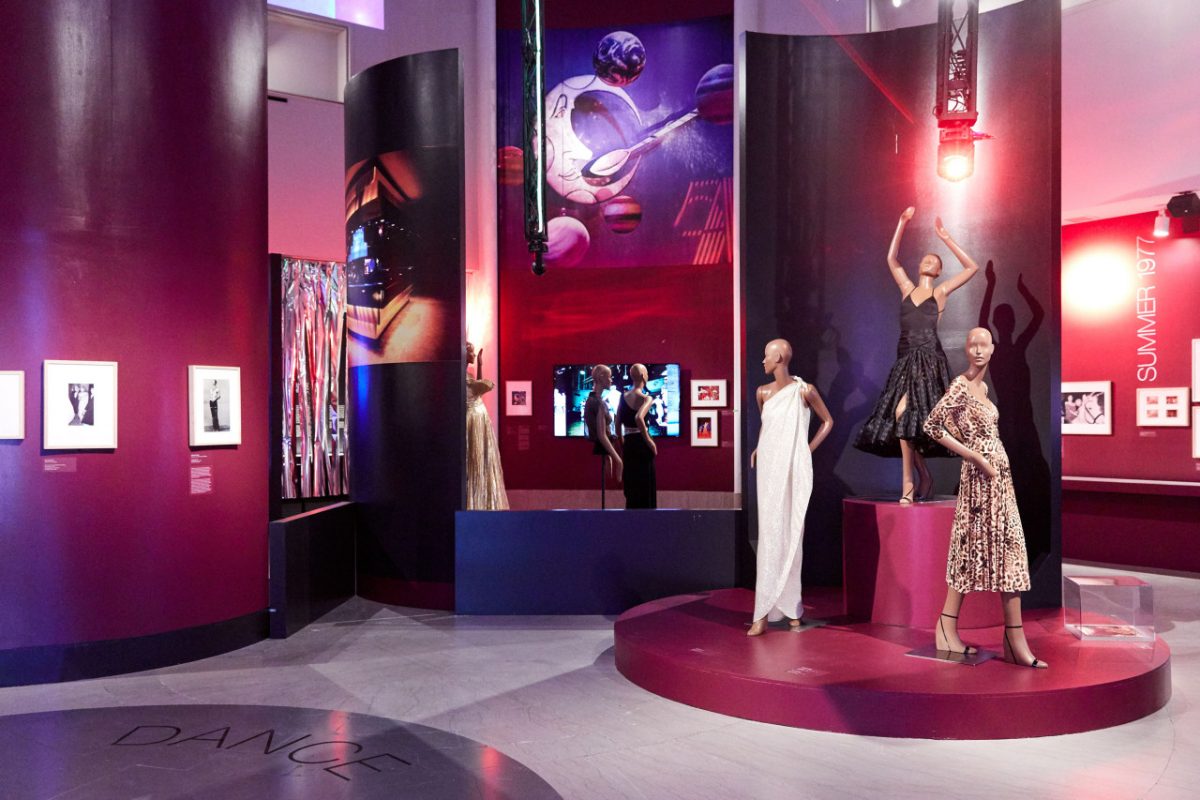The diamond dust was swept up long ago, yet the memory endures of a moment in the late 1970s when a flash of brilliance glittered from the rubble of a bankrupt city.

That moment was called Studio 54 and, even after more than four decades, the aura of the club’s specific magic persists. Opening during a tumultuous party in April 1977, by Steve Rubell and Ian Schrager — two slick but inspired promoters — Studio 54 was an Aladdin’s cave tucked amid the porn palaces of Midtown. By transforming an old theater into a disco, the two men also recast the nightscape of the city, creating a club that magnetized the famous and the merely fabulous equally.
If nothing before quite resembled Studio 54 — where real diamond dust was often set adrift from the ceiling to fall on the dancers below like intergalactic snow — what seems certain is that we will not see the likes of it again. “What we wanted to do here was emphasize the visual dimension, the art, the photography, the fashion, the scenography,” that went into the creation of the storied nightclub, said Matthew Yokobosky, curator of “Studio 54: Night Magic,” which is due to run through July 5 at the Brooklyn Museum. (The museum announced late Thursday that it was temporarily closing over concerns about the coronavirus.) “We wanted to capture the way these various aesthetic elements came together to create an environment where people felt really free,” Mr. Yokobosky added — or at least as liberated as Bianca Jagger, who was led onto the dance floor atop a white horse for her 30th birthday party.
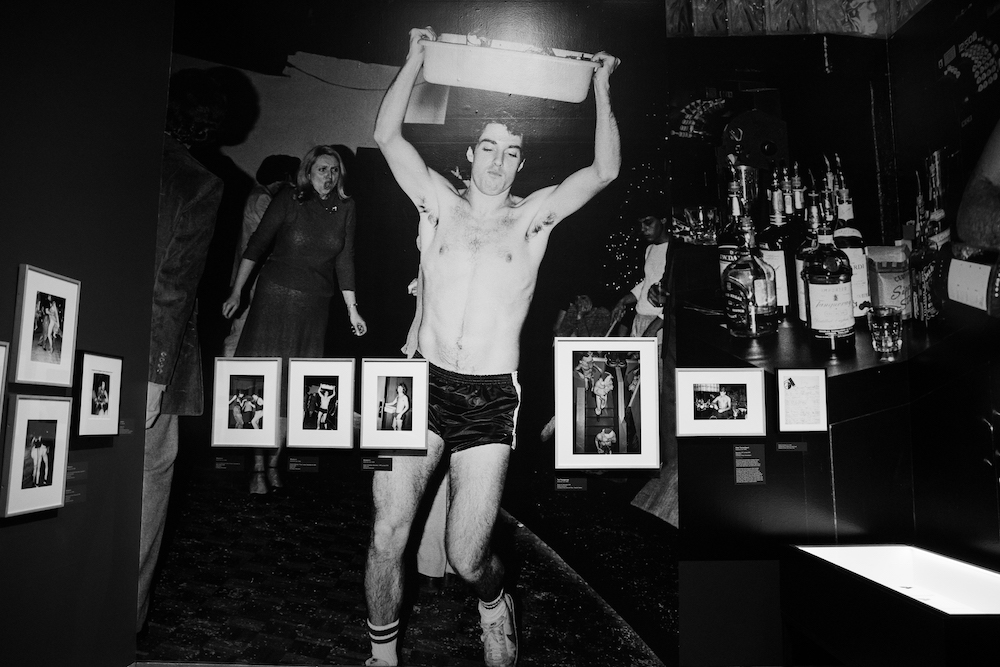
Just how electrifying the experience of Studio 54 could be was made clear in interviews with dozens of those who experienced the club during its 33-month heyday, in those last giddy moments before the owners were jailed for tax evasion, the club closed, and the night life was altered beyond all recognition by the deadly onset of AIDS.
The Brooklyn Museum curator Matthew Yokobosky made incredible efforts to re-create the “night magic” that came to define Studio 54. “I had never seen an exhibition done about one nightclub before,” Yokobosky said. “So, the big question for me was, How do you bring a sense of place into a museum? How do you give a gallery the sense of a nightclub?” The exhibition’s evening atmosphere is enhanced by the Brooklyn Museum’s own take on kinetic lighting, and a disco soundtrack that changes in each gallery.
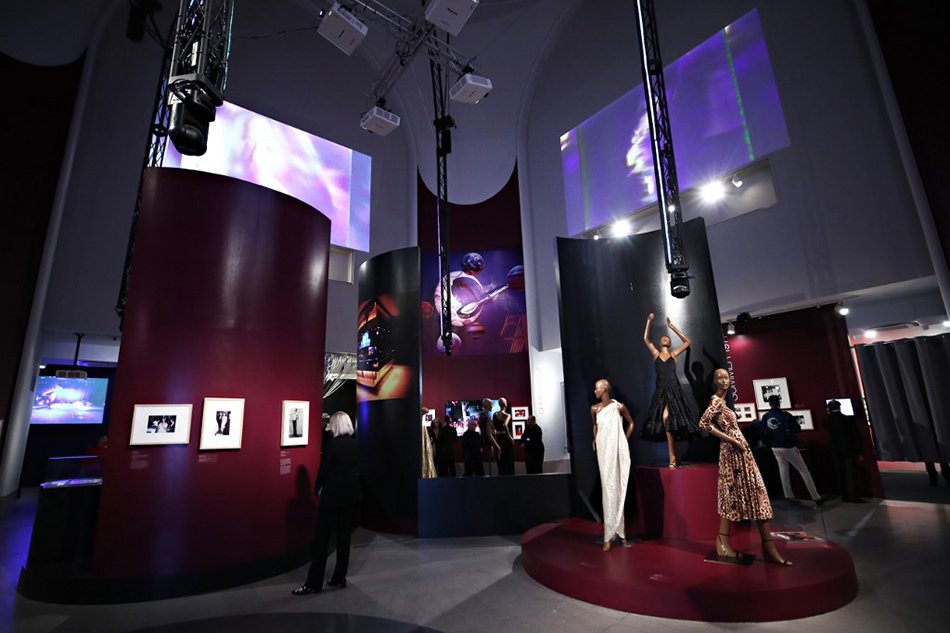
It took Yokobosky two years and over 100 interviews to acquire the 650 different objects on display. The chronological show includes virtually every medium: photography, fashion, drawing, film, set proposals and architectural designs, and more. In having catered to a predominately creative clientele, the traceable repercussions of Studio 54—in ethos, aesthetic, sound, and design feel endless.
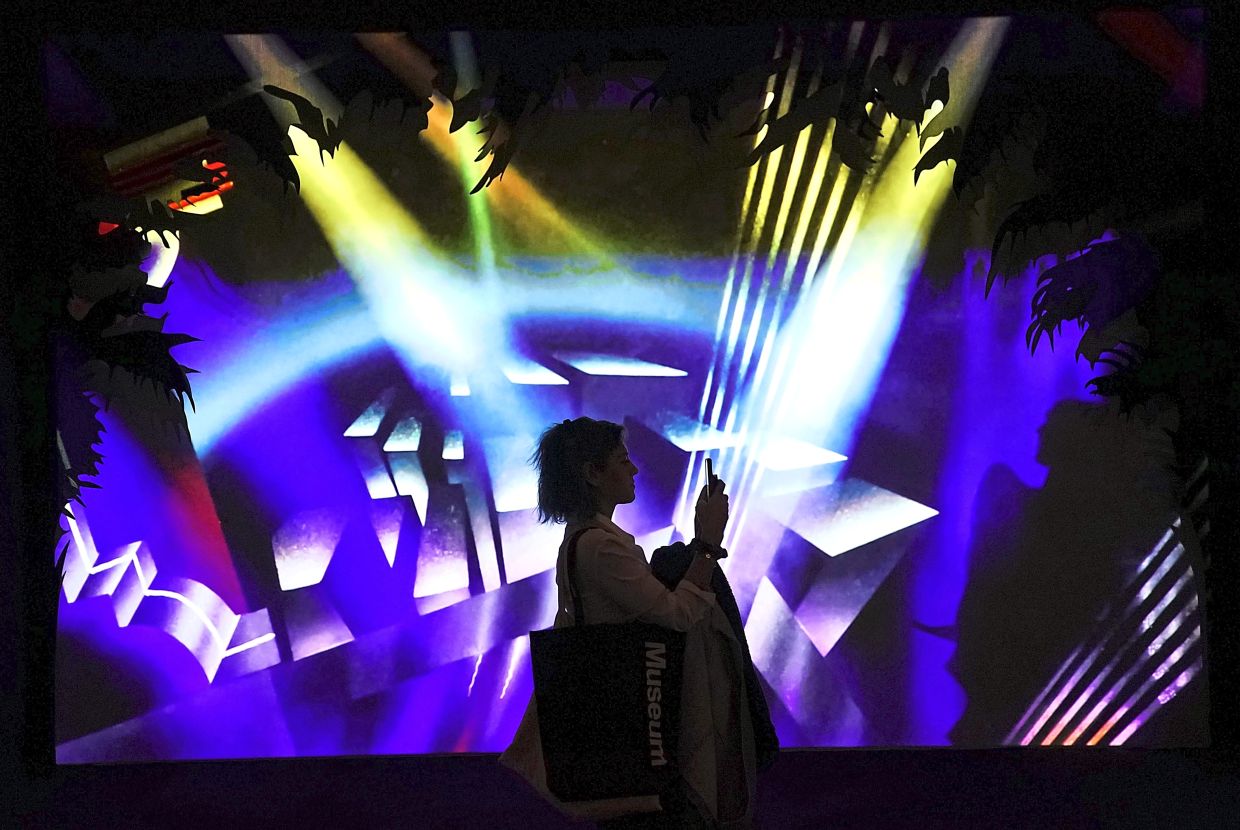

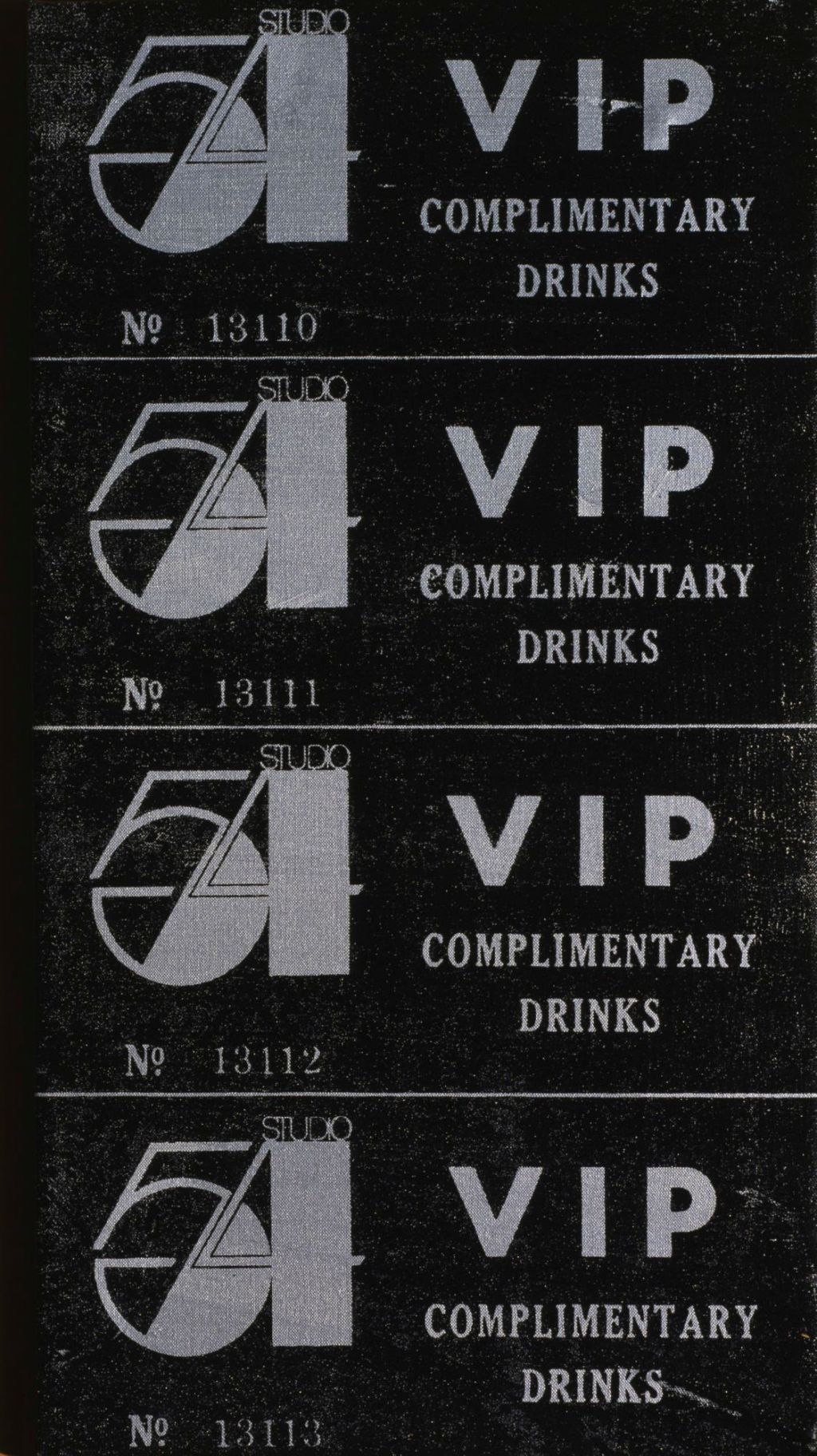
Visitors can expect plenty of drool-worthy Studio 54 ephemera, like invitations, coat check tags, logo mock-ups, and guest lists. Among the more storied artifacts: a bundle of drink tickets that Rubell gave to Warhol for his birthday, Pat Cleveland’s original clubbing clothes, and a 62-carat sapphire that Elizabeth Taylor once sported at the venue. Other highlights include the artistic byproducts of Studio 54’s enthusiastic drug culture, which is immortalized in Richard Bernstein’s poppers wallpaper and the club’s iconic moon and spoon set piece. The exhibition’s wall text explains the imagery in comically matter-of-fact language: “Several times a night at Studio 54, a moon and a spoon would fly in separately from the left and right wings and meet center stage. The spoon would then twinkle and a line of lights would zip up the moon’s nose, referring to the use of cocaine.”
 Photography Laura June Kirsch for Juxtapoz
Photography Laura June Kirsch for Juxtapoz



The show addresses the club’s predecessors and its afterlife in inventive ways. The entrance to the exhibit, which is designed to mirror the actual entrance of Studio 54, leads to a dark room that’s dedicated to the earlier history of New York nightlife. Here, there’s an impressive collection of 20th-century glass- and silverware (think martini shakers from the ’20s). Toward the end of the show, clothing displays surround a manufactured dance floor. Studio 54–related designs from the ’70s stand beside modern interpretations by designers like Rick Owens, illustrating the club’s enduring relevance in fashion.



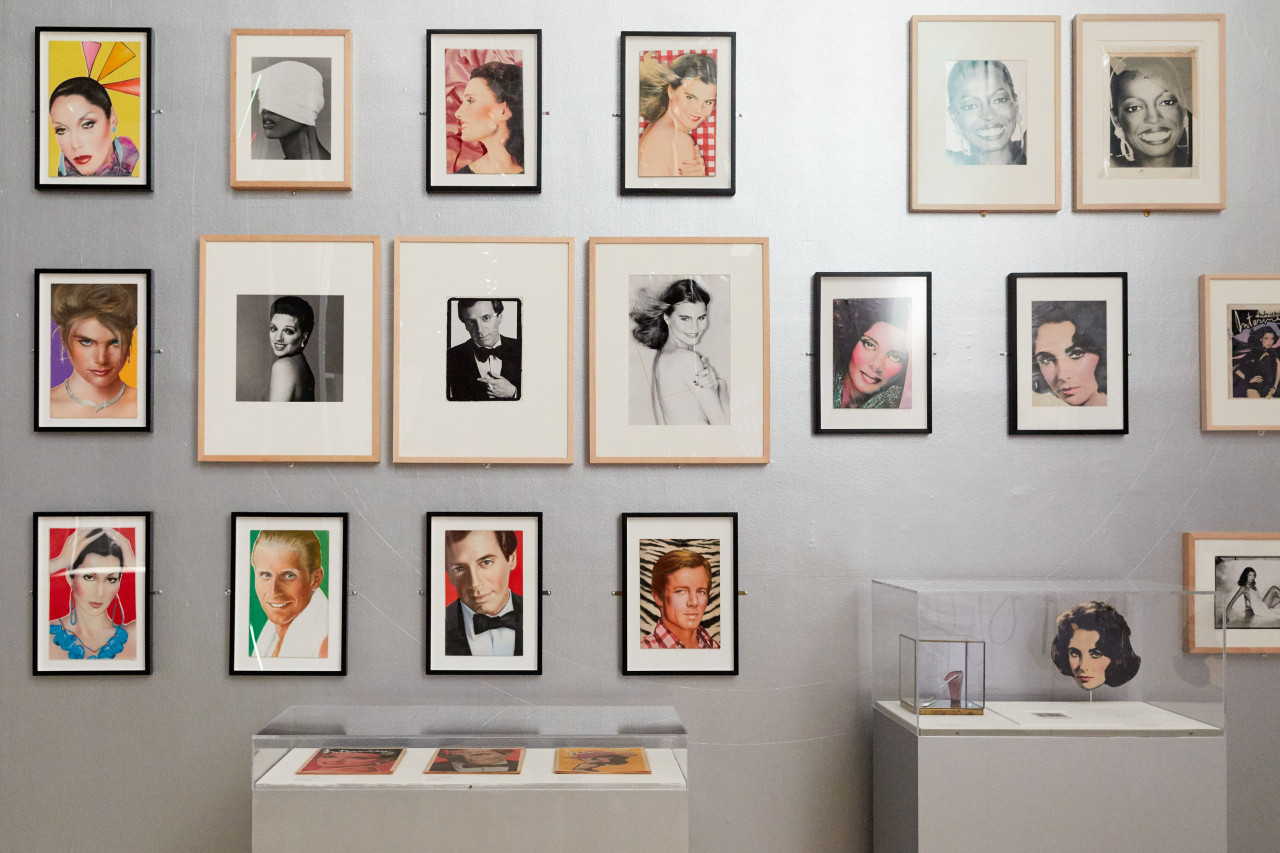
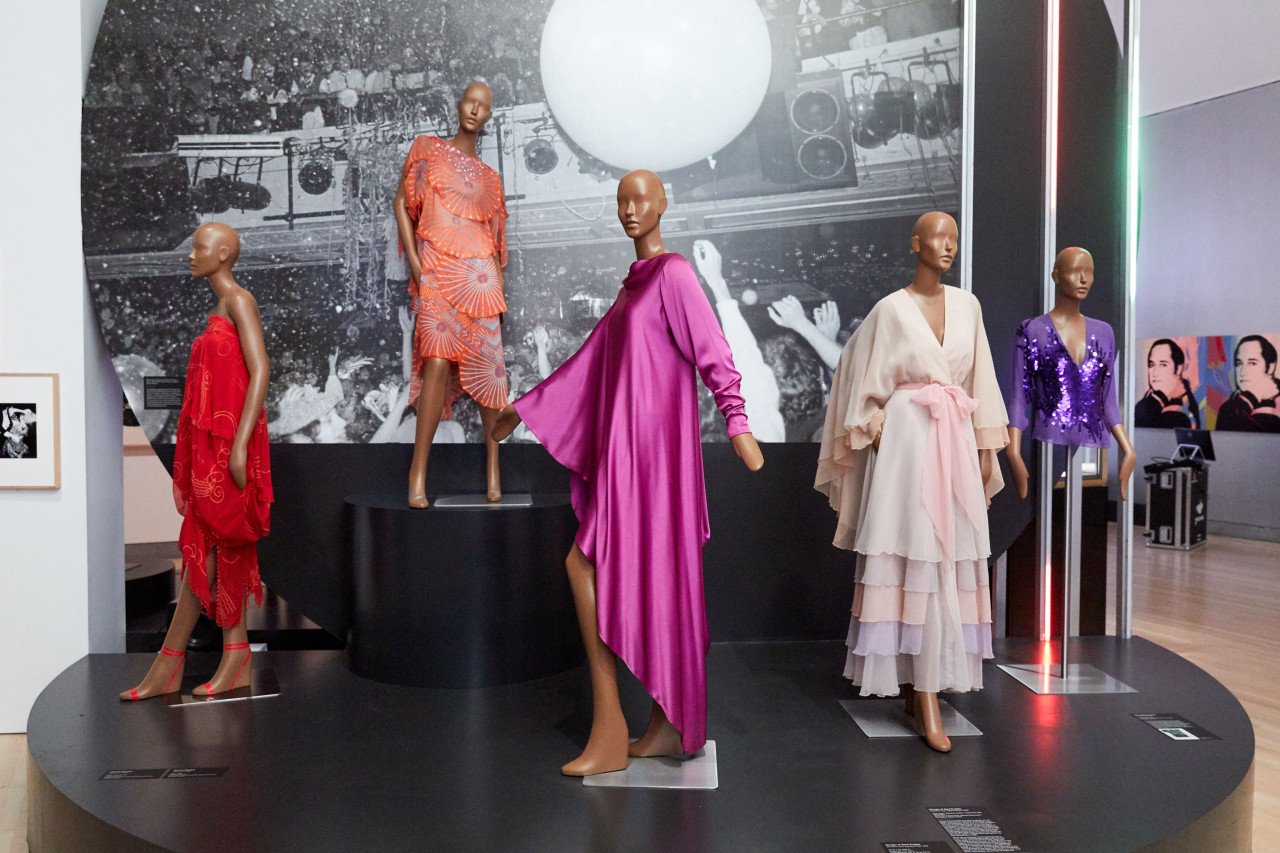

Rubell once said that while the Fifties were all about rock stars, the Seventies were about fashion designers, the curator has spotlighted medleys of looks from Halston, Norma Kamali, Stephen Burrows, Giorgio di Sant’Angelo, Calvin Klein, Larry LeGaspi, Zandra Rhodes and others.
There are also traces of Studio 54 fashion shows for Kenzo, Claude Montana, Gloria Vanderbilt, Charles Jourdan, Bill Haire, Issey Miyake’s “East Meets West” and “A Salute to American Designers.” Visitors, who read the fine print, will find references and glimpses of Karl Lagerfeld’s 18-century-themed party, Valentino’s 45th birthday party, Yves Saint Laurent’s Opium perfume launch and Giorgio Armani’s party featuring the Trocadero Gloxinia Ballet Company. The slew of images includes a striking one of Carolina Herrera seated on a banquette in a one-shoulder gown. Antonio Lopez’s original sketches for what Alvin Ailey dancers wore to the Kay Thompson-choreographed opening night performance are also in the mix.



There were also sit-down dinners, starting with a Jaipur Ball UNICEF benefit in honor of First Lady Rosalynn Carter. Nearby is a photo of a 12-year-old Brooke Shields and a 16-year-old Mariel Hemingway bursting with laughter at the club in 1977. “They were young and they were at Grace Jones’ 3 a.m New Year’s Eve performance,” the curator said.

Brooke Shields and Mariel Hemingway in 1977. Adam Scull/Courtesy Photo
Referring to a video clip of Calvin Klein explaining how a man once approached him at 4 a.m. at the club, asking if he ever considered designing blue jeans, the curator said. “We all know that story.” To his point, a pair of Calvin Klein jeans are on view with three pairs of Studio 54 ones. Kamali designed the latter, which were licensed by the club’s two owners to Landlubber.
The exhibition’s closes with a quote from Liza Minnelli: “Studio 54 brought a glamour back to New York that we haven’t seen since the ’60s—it made New York get dressed up again.”
JUDY LICHT (television journalist) You have to remember the city was at a low point, there was graffiti all over the place, crime was a problem. It was depressing, and nobody wanted to come here. For the average New Yorker, there was this sense of hopelessness. Then, suddenly, this club opens, and it is like the “Wizard of Oz” but staged by Federico Fellini. The two wizards are Steve and Ian and if you get past the doorman, you are on the Yellow Brick Road.
NORMA KAMALI (fashion designer, former girlfriend of Ian Schrager) New York was bankrupt, a disaster. Everybody was leaving. At Studio 54 everybody could shake free of the doom and gloom. It was the answer, the release, the place where you could go and not feel threatened. Nobody was going to judge you. Everybody wanted to be there to experience total exhilaration.
RENNY REYNOLDS (landscape architect, party designer) We had triangular platforms covered in black carpeting with banquettes in front. It was black with white spotlights and we did massive bowls of pink peonies.
RON GALELLA (photographer) The atmosphere was like a Hollywood set. The guests were the actors. They were performing.
ANTON PERICH (photographer, publisher of “Night: A Chronicle of New York After Dark”) I was searching for narcissism and I found it there. All I had to do was walk in and everybody was there ready to be shot.
HARRY KING (celebrity hair stylist) I went to opening night, probably alone. When I got there, I remember thinking, “If somebody dropped a bomb here all the models, photographers, hairdressers, designers and makeup artists in the city would be dead.”
RENNY REYNOLDS The Monday after opening night, the phone rang. It was Halston asking, “Can I give a party for Bianca Jagger — tonight?” I conceived a plan. Ian went to a stable on the Upper West Side and found a white horse. “Oh! Calcutta!” was on Broadway at the time, and we found every non-working dancer we could and got them to perform. We hung a long strip of fabric across the stage, which formed a scoop that we filled with balloons. At just the right moment, the balloons went flying. There is a very famous photo from that night of Bianca on the white horse with the balloons. That photograph went viral when viral wasn’t happening.
MYRA SCHEER (radio host, former executive assistant to Steve Rubell and keeper of the Studio 54 door list) I didn’t work there yet. I was working in an ad agency. I had friends that worked in the White House and I called Steve Rubell and left a message. He called back and said we were in. That night when we got there, I told [the doorman] Marc Benecke we were on the list and he ignored me. I turned around and saw the look on my friend’s faces and felt that I had failed my country.
HARRY KING You could hear the boom of the music. I was early the first time I went, and so I climbed up to the balcony and there in the front row a beautiful young woman in an Azzedine Alaïa dress was [performing oral sex] on a handsome guy in a suit. I thought, “Oh, what a fabulous place!’’
NORMA KAMALI Marc, the doorman, and Steve wore my sleeping-bag coats. They were made from actual sleeping bags, lined in flannel with ducks and geese and wildlife patterns. People noticed the coat on Marc and would buy one in the hopes of getting in.
MYRA SCHEER Fast forward two years. They hired me on instinct. In the first week or so, Steve gave me the call list. Andy Warhol, Richard Gere — it was my job to call them. Andy would always take the call. Mick Jagger and Keith Richards were comped but the rest of the group had to pay. Sylvia Miles was on the call list. I called her one night to let her know that Tobe Hooper, the director, was coming. He was casting for a horror movie. Sylvia came and she got a role. She later said, “I got more jobs at Studio 54 than I ever did with an agent.”
MARC BENECKE (manager at Edition hotel, former Studio 54 doorman) I was introduced to Steve Rubell by a cousin in security. I was 19. Originally, I took a lot of my knowledge of who was who from Lynn Barclay [a seasoned doorman who had worked at the clubs Arthur and Regine’s]. People said Steve wanted to mix the crowd up like a salad or casting a play.
VALERIE LeGASPI (widow of influential fashion designer Larry LeGaspi, creator of futuristic looks for Kiss, LaBelle, Grace Jones and George Clinton) Other clubs were different. My gay friends were very androgynous-looking, and I don’t know that when we went to the Paradise Garage, which was into the gay clone look, they exactly appreciated us. At Studio 54 they really loved kids like us that were the fashion freaks.
GEORGE CARR (fashion designer) In 1977, I got hired by Calvin Klein to work in his new men’s wear company. I got to go to Studio 54 with my brother, Zack, who was designing for Calvin. The place felt mythical. It was like my castle every night. Marc let the drawbridge down and let these young princes of New York enter.
ANTON PERICH It was the loudest disco in the world but it had dark corners where you could whisper. I saw [the legendary couturier] Charles James talking to Elsa Peretti, Truman Capote talking with Halston, Diane von Furstenberg talking with Tennessee Williams, Bianca Jagger with Patti Smith. I was amazed to see underage people running around the place. Brooke Shields grew up there.
CORNELIA GUEST (actress) I was 13 when I first went there. I remember Marc in his Norma Kamali coat standing on a hydrant, so handsome. I remember the mai tai bars and the piña coladas upstairs on the balcony. I used to get them without alcohol. I was riding then and would go home afterward to my parents’ [the socialites C.Z. and Winston Frederick Churchill Guest] apartment. I had to get up in the morning to go to school and out to Long Island and the barn.
NORMA KAMALI Ian Schrager understood right away that the experience was going to be everything and that everyone was going to come back for a different experience and he would make each one different every time. He’s such a detail freak. To him, the details were everything.
L.J. KIRBY(bartender at Studio 54) I bartended there the summer of 1979 to February 1980. I remember thinking it was expensive to get in — $12 [roughly $47 in 2020 dollars] on Tuesdays, Wednesdays and Thursdays, and $15 on Fridays and Saturdays. It opened at 10 p.m., and served liquor until 4. They never ever closed before 6 a.m. It was an all-cash bar and most people drank vodka — Smirnoff or Stoli, I think. I’m a kid from Jersey and it shocked me that people would tip $1 for any drink.
RON GALELLA I was there usually around 11, because that was the best time. Steve Rubell had invited all the celebrities in town to come and get drugs and dance. He was clever that way. He knew the celebrities would come because they liked to meet other celebrities.
SCOTT ROLLINS (biographer of the performance artist Richie Gallo, known as “Lemon Boy” because he marked the boundaries of his street performances with lemons) Look back at those times and Bowie and the New York Dolls were all putting on an act, dressing up to go out. Richie didn’t make any distinction between the street and the clubs. He would dress in fishnet bodysuits with nothing underneath and one sequined glove. He would position himself under the disco ball and raise his hand and the glove would sparkle in a beam of light. Michael Jackson always said he got the idea for the glove from an art director on a photo shoot. He really got it from Richie.
MARC BENECKE I never was that super star-struck, but I remember very vividly when Farrah Fawcett first came to the club. A white limo pulled up and she got out with this white blond hair and wearing all white. I remember it was snowing. It was this total Hollywood cinematic vision come to life.
BOB COLACELLO (editor of Andy Warhol’s Interview) Disco came along at the moments when the baby boomers stopped protesting and started dancing. Disco, which had started in black clubs and migrated to gay clubs, had a strong syncopated beat that everybody could move to. You could make up your own steps and jump up and down like a child. Then along came cocaine.
JUDY LICHT Everywhere in the club you could smell the poppers. Before there was L.G.B.T.Q., there were the bathrooms at Studio 54. You had no idea what anybody was.
ZANDRA RHODES (fashion designer) There is one very embarrassing picture of me asleep sitting next to Tina Chow, who was also asleep. I’m not really a nightclub person. I don’t drink. When you’ve got green hair, though, and you wear a dress with feathers all over it, people automatically think you’re drugged up.
BOB COLACELLO We were doing cocaine not to be self-destructive but to stay up later and dance some more and hopefully meet someone to take home. The pill had been invented and we didn’t know about AIDS yet. All those things came together in a very brief period from 1977 to 1980.
CORNELIA GUEST Halston and Steve and those people were very protective of me. I remember a couple of times, Halston said, “Come on, we’re leaving.” They’d move me. They knew what was going on.
BOB COLACELLO The great thing was there were no phones with cameras. Stars like Diana Ross, Ryan O’Neal and Jack Nicholson could smooch somebody and not have to worry about it coming out in the press.
CORNELIA GUEST Tom Bolan, Roy Cohn’s law partner, used to have a little Instamatic camera to take pictures. People weren’t scared to make a mistake. Now, if a designer makes one bad dress and it’s on Instagram, they’re ruined.
BOB COLACELLO Photographers had to turn their contact sheets over for approval to Steve Rubell. There were people feeding gossip columns, but they had to wait until they got home at 3 in the morning or the next day. It was all so much more controlled and less anarchistic.
RENNY REYNOLDS For New Year’s Eve 1978, literally the last major party before Ian and Steve were arrested [and jailed for tax evasion] we created walls of ice for the entire main room. The ice company came with blocks of ice and bags of crushed ice and they told me that if you used the crushed ice between the blocks it acted like mortar. We backlit the ice with black light that read as glowing blue. We had a couple of feet of artificial snow for depth. When I first walked in, the walls looked kind of frosted, but they became much more beautiful as the outer layers melted. There was also diamond dust. I used diamond dust a bunch of times. On any given morning you could walk along West 53rd Street at the back of the club and you could see it sparkling.
Through July 5 at the Brooklyn Museum, 200 Eastern Parkway. The museum is temporarily closed over concerns about the coronavirus.
nytimes.com/2020/03/12/arts/design/studio-54-history-brooklyn-museum.html
wmagazine.com/story/brooklyn-museum-studio-54-exhibition-opening-party/
wwd.com/eye/people/studio-54-night-magic-to-spotlight-fashion-celebrities-designers-and-creative-freedom-1203536035/

